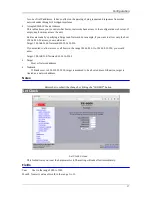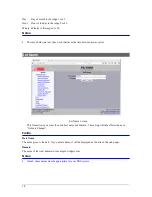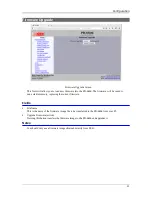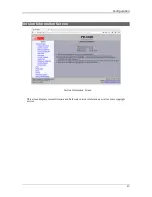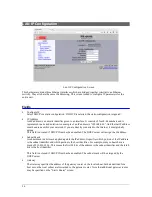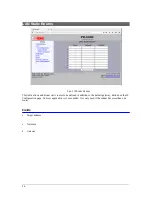
Chapter 3
The Configuration Process
This Chapter describes the configuration management process on the PR-6606 using a
Web Browser.
Overview
The PR-6606 contains a quite flexible configuration management system. By using this system correctly,
one can remotely configure, save copies of that configuration to a PC, make configuration changes for later
activation, and remote transfer firmware upgrades to the unit.
There may be up to three configuration “images” in use at any time.
1. The
active
configuration. Normally, this is the configuration that was loaded from memory when the
unit was last booted. However it may have been changed since boot time as described below. This is
the configuration that is currently running the unit.
2. The
pending
configuration: This is the current configuration that was loaded form memory during the
last boot
along with any changes made by using the configuration screens
. This configuration is
NOT the configuration running the PR-6606 at present.
3. The
stored
configuration. This is the configuration that was last written to the non-volatile RAM. The
next time the PR-6606 is power cycled, it will start running this configuration.
Note that any configuration transfer (with the Administration Configuration Transfer screen) is the
pending
configuration. You can load a configuration file from the PC, then either activate it to test it. Or, save it
without activation if you don’t want to change the currently running configuration.
Using the Configuration Flexibility
When the PR-6606 starts from a power-off condition, it loads an active configuration from its non-volatile
memory. This active configuration is also copied to the working memory and is the “pending”
configuration.
Whenever the configuration screens are used to change values,
only
the
pending
configuration is
changed… not the
active
configuration.
Using the configuration screens will change the pending configuration. You may change the active
configuration by copying the pending configuration over it. This change is performed using the “Activate
Configuration” screen. Going to this screen activates the pending configuration by copying the pending
configuration over the top of the active configuration. This does not store the configuration in non-volatile
memory. When the hardware is next reset or powered up, it will begin using the old stored configuration
from before the changes were made and activate command clicked.
Using the “store configuration” screen will copy the pending configuration into non-volatile memory. It
will not cause this configuration to begin running. However, upon the next reset or power cycle, the
PR-6606 will begin using the stored configuration.
It is possible to activate the pending configuration using the Activate Configuration screen and then store
the configuration using the Store Configuration screen. This two step process will cause all three
configurations to be identical.
12



















